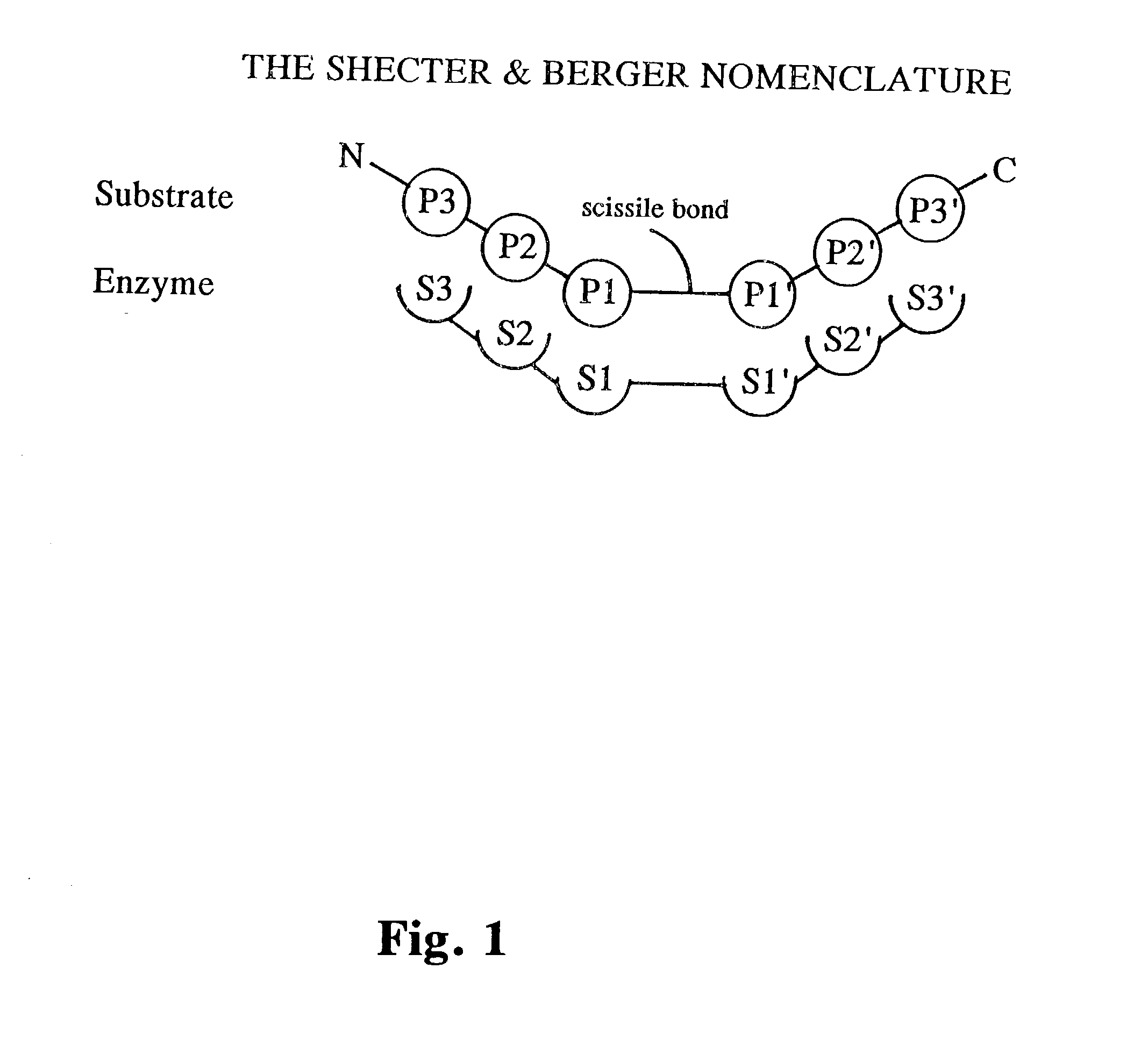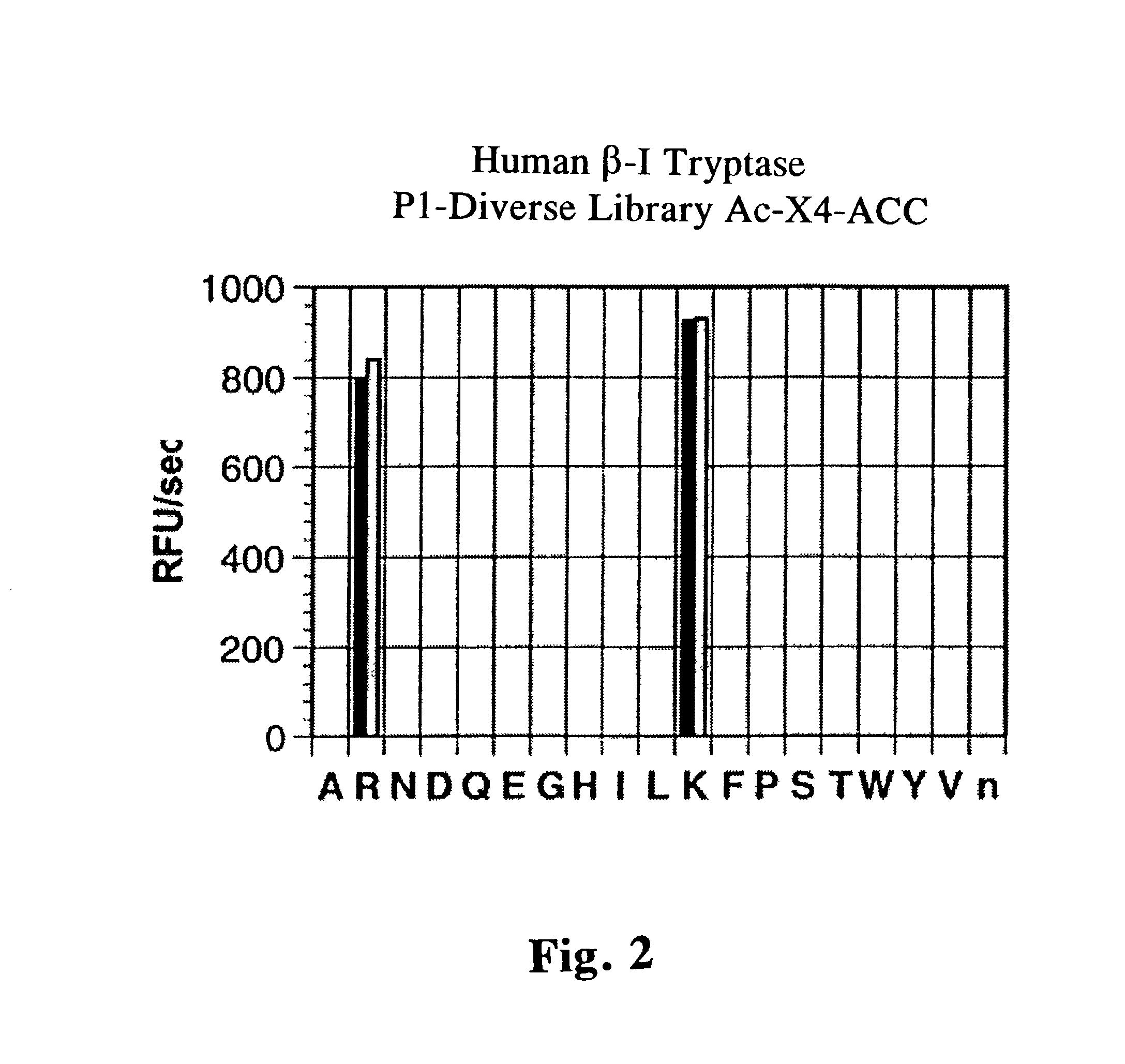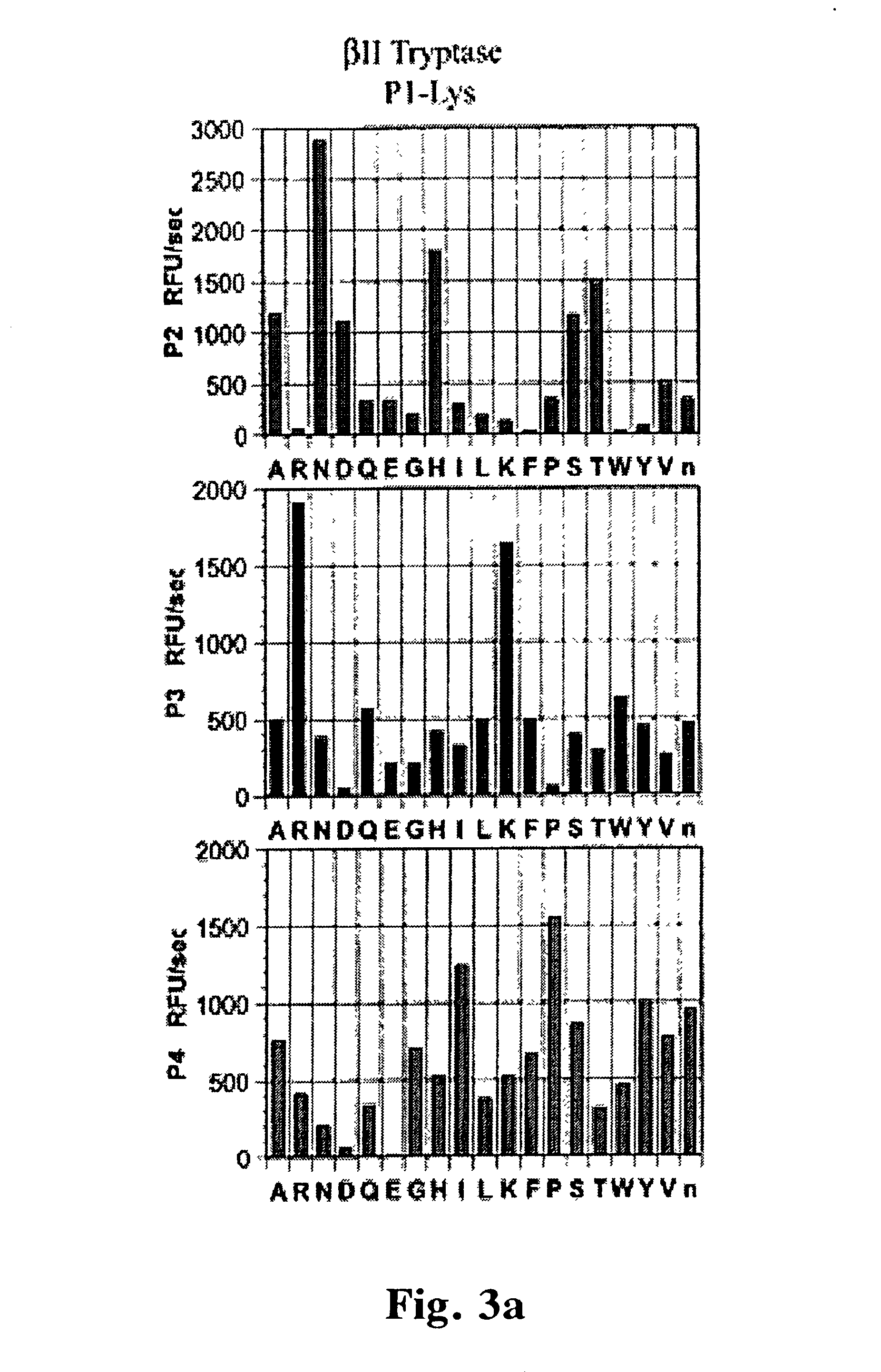Tryptase substrates and assay for tryptase activity using same
a technology of substrates and tryptase, which is applied in the direction of peptides, peptide/protein ingredients, immunoglobulins, etc., can solve the problems of difficult to study beta-tryptase and its .beta.-tryptase and its study, and the immunological detection of beta-tryptase is fraught with poor sensitivity or availability,
- Summary
- Abstract
- Description
- Claims
- Application Information
AI Technical Summary
Problems solved by technology
Method used
Image
Examples
example 1
Substrate Specificity of .beta.I- and .beta.II-Tryptases
[0103] Recombinant .beta.I- and .beta.II-tryptases were produced and secreted in Pichia pastoris as mature enzymes. The ability to produce active mature enzyme rather than the inactive, precursor zymogen is important for substrate specificity studies because it obviates the need to remove the pro-peptide through the addition of an activating protease, whose activity may complicate subsequent specificity studies. There is a single amino acid difference between .beta.I- and .beta.II-tryptases at position 113, an asparagine and a lysine respectively. Replacement of asparagine for lysine removes an N-linked glycosylation site in tryptase .beta.II, making it contain one glycosylation site. The reduction in the number of glycosylation sites can be seen in the recombinant expression of both enzymes with .beta.I-tryptase migrating as multiple glycosylated bands and .beta.II-tryptase migrating as glycosylated and unglycosylated bands. T...
example 2
Substrate Specificities of .beta.I- and .beta.II-tryptases
[0104] To explore whether this single difference in glycosylation affects the substrate specificity of .beta.I- and .beta.II-tryptases, several combinatorial peptide libraries with fluorogenic leaving groups were utilized. The P1-position was first defined with a library in which each of the P1-amino acids in a tetrapeptide is held constant while the other three positions contain a equimolar mixture of 19 amino acids (cysteine was omitted and norleucine replaced methionine). Both .beta.I- and .beta.II-tryptases prefer cleaving after lysine over arginine with no other amino acids being accepted at this position (FIG. 2).
example 3
Extended Substrate Specificities of .beta.I- and .beta.II-tryptases
[0105] To explore the extended substrate specificities of the .beta.-tryptases as well as to determine if extended specificity was dependent on the context of the P1 amino acid, .beta.I- and .beta.II-tryptases were screened against two libraries that differed only in the P1 amino held constant, lysine and arginine. The P4 to P2 extended substrate specificities of both .beta.-tryptases reveal that the enzymes have a similar substrate preference that is not dependent on whether the P1 amino acid is lysine or arginine (FIGS. 3A and 3B). Also apparent from the specificity screen is that while both enzymes show selectivity at each position, many less optimal amino acids can also be accommodated in the substrate indicating that additional mechanism of substrate discrimination may also be in place. Both tryptases show an unusual preference for proline in the P4 position, no other serine protease screened to date shows this ...
PUM
| Property | Measurement | Unit |
|---|---|---|
| emission wavelengths | aaaaa | aaaaa |
| Excitation wavelengths | aaaaa | aaaaa |
| pH | aaaaa | aaaaa |
Abstract
Description
Claims
Application Information
 Login to View More
Login to View More - R&D
- Intellectual Property
- Life Sciences
- Materials
- Tech Scout
- Unparalleled Data Quality
- Higher Quality Content
- 60% Fewer Hallucinations
Browse by: Latest US Patents, China's latest patents, Technical Efficacy Thesaurus, Application Domain, Technology Topic, Popular Technical Reports.
© 2025 PatSnap. All rights reserved.Legal|Privacy policy|Modern Slavery Act Transparency Statement|Sitemap|About US| Contact US: help@patsnap.com



